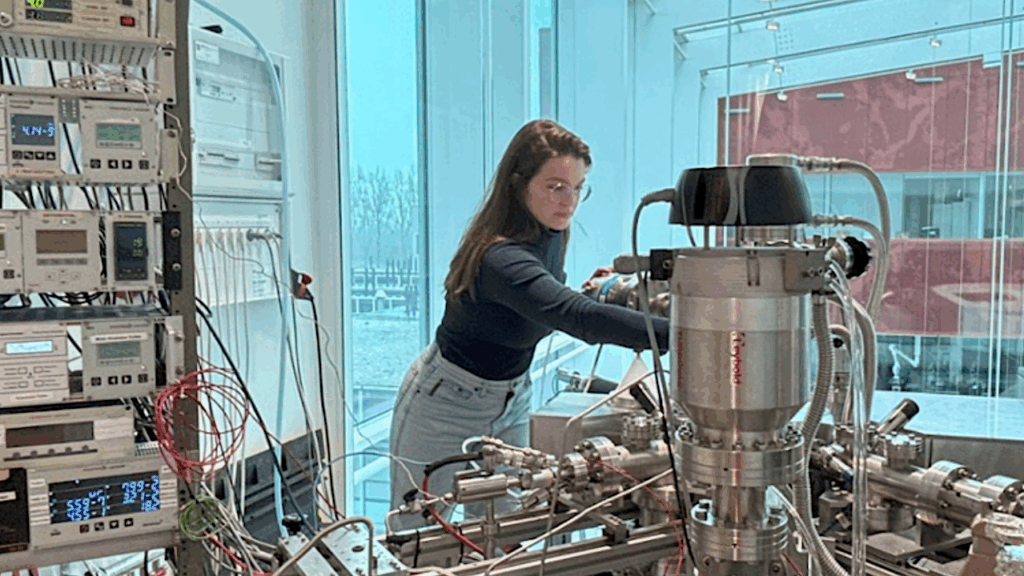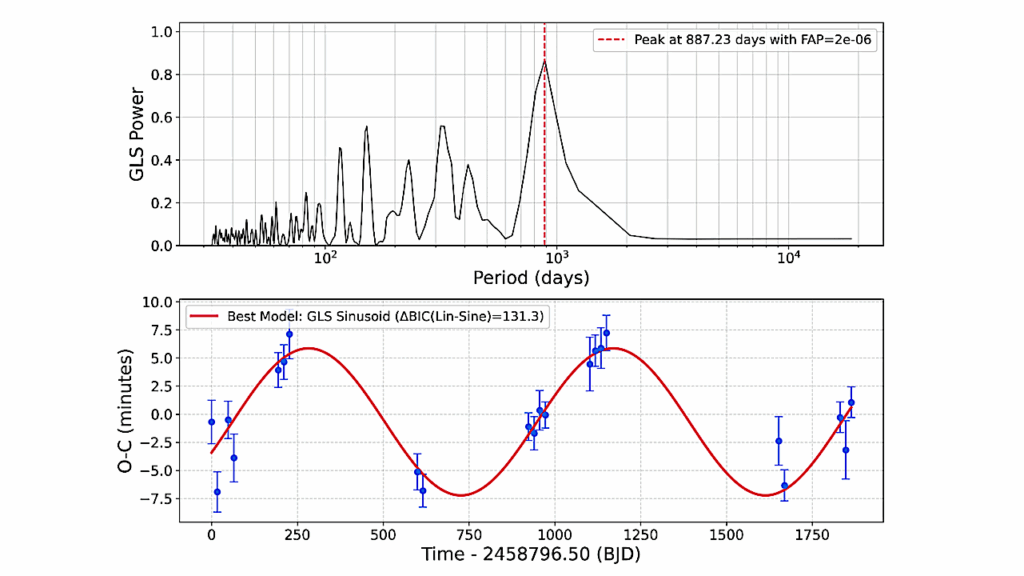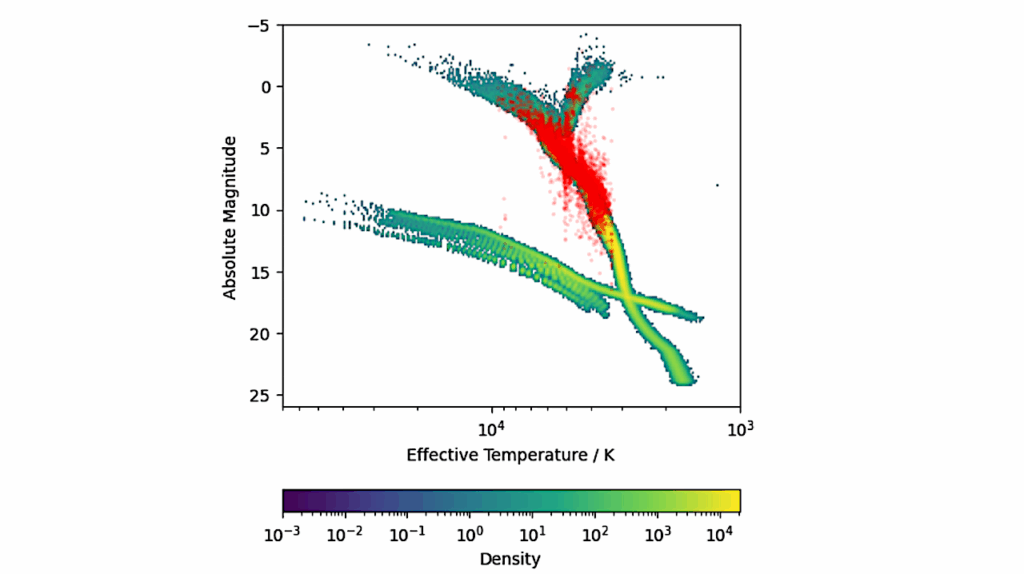Webb And Hubble Discover Brown Dwarf Protoplanetary Disks In The Orion Nebula

Newborn stars are surrounded by disks of gas and dust within which planets are born, known as protoplanetary disks. In the Orion Nebula, the brightest and most massive stars emit intense ultraviolet radiation that illuminates protoplanetary disks, allowing them to be photographed in unusual detail.
The striking images of these UV-illuminated protoplanetary disks, called proplyds, were one of the first major discoveries by NASA’s Hubble Space Telescope decades ago. A new study by an international team of researchers, including a Penn State astronomer, used NASA’s James Webb Space Telescope to reveal that some of the proplyds originally detected by Hubble surround brown dwarfs, which are star-like objects that are too small and cool to undergo hydrogen fusion.
The new results from Webb will help astronomers to better understand how brown dwarfs form, their relationship to stars and planets and if they might have planets of their own.
A paper describing the observations has been accepted for publication in the Astrophysical Journal and is available online as a preprint.
“Stars are born within massive clouds of gas and dust in space that can be light years across, which are called nebulae,” said Kevin Luhman, professor of astronomy and astrophysics in the Eberly College of Science at Penn State and a leader of the research team. “For decades, astronomers suspected that, soon after a star coalesces within a nebula, planets are born within a disk of gas and dust surrounding the newborn star, known as a protoplanetary disk.”
Soon after its launch in 1990, the Hubble Space Telescope revealed some of the clearest direct photographs of protoplanetary disks through observations of the Orion Nebula. The Orion Nebula contains about 2,000 newborn stars and is one of the nearest star-forming nebulae to our solar system, located 1,300 light years away.
“Some of the objects born in nebulae like Orion have masses that are too small for them to undergo hydrogen fusion, so they are cool and faint and do not qualify as full-fledged stars,” said Catarina Alves de Oliveira, head of the Science Operations Development Division at the European Space Agency and a leader of the research team. “These star-like bodies that lack fusion are known as brown dwarfs. The question is, can we find proplyds around any of the brown dwarfs in Orion?”
Soon after brown dwarfs were discovered in the mid-1990s, astronomers began wondering whether they also might harbor protoplanetary disks. Some of the proplyds detected by Hubble in the 1990s seemed to surround objects faint enough to be brown dwarfs, but they lacked the measurements needed to confirm that they had the cool temperatures of brown dwarfs. A more sensitive infrared telescope was needed for such measurements.
Launched in December 2021, NASA’s James Webb Space Telescope is the most powerful infrared telescope to date, making it perfectly suited for measuring temperatures of faint objects in the Orion Nebula that might be brown dwarfs, including the faintest proplyds that were photographed by Hubble 30 years ago.

JWST/NIRCam images in five filters (F140M, F162M, F182M, F187N, F212N) for a field in the center of the ONC (M. J. McCaughrean & S. G. Pearson 2023). We have indicated the field of view for the NIRSpec MSA at two pointings (rectangles). The fluxes are displayed on a logarithmic scale. North is up and east is left. — The Astrophysical Journal
The team of astronomers performed infrared spectroscopy measurements on a small sample of brown dwarf candidates in Orion using Webb’s Near-Infrared Spectrograph. These data have confirmed that 20 objects are cool enough to be brown dwarfs, the smallest of which may have masses of only 0.5% of Earth’s sun, or five Jupiter masses. Two additional objects are near the minimum mass for fusion — 7.5% of the sun’s mass — so it is unclear if they are small stars or large brown dwarfs. The sample of new brown dwarfs includes two faint proplyds detected by Hubble in the 1990s, making them two of the coolest and least massive proplyds found to date.
“The new Webb observations have only scratched the surface in terms of brown dwarfs in Orion,” Luhman said. “The nebula contains a few hundred faint objects that could be brown dwarfs, which are ripe for spectroscopy with Webb. Future observations of Orion with Webb could potentially find many more examples of proplyds around brown dwarfs and determine the smallest mass at which brown dwarfs exist. This information will help us fill in the gaps in our knowledge of how brown dwarfs form and their relationship to stars and planets.”
In addition to Luhman and Alves de Oliveira, the research team includes Isabelle Baraffe and Gilles Chabrier at the University of Exeter in the United Kingdom, Elena Manjavacas at the European Space Agency, Richard J. Parker at the University of Sheffield in the United Kingdom, and Pascal Tremblin at the Université Paris-Saclay in France. The Hubble observations were performed through program 10246. The NIRCam and NIRSpec observations with Webb were performed through Guaranteed Time Observation programs 1256 and 1228, respectively.
JWST/NIRSpec Observations of Brown Dwarfs in the Orion Nebula Cluster, The Astrophysical Journal (open access)
Astrobiology,








